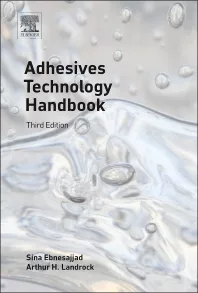2022 Voices from the Top: Adhesive & Sealant Industry Insights
To develop Voices from the Top, we reached out to key leaders at some of the top adhesive and sealant companies to get their insights on a number of issues.

(Photo courtesy of gremlin via gettyimages.com.)
Rob Hubbard, Vice President, Global Strategic Sourcing, H.B. Fuller
H.B. Fuller’s net revenue grew by 17.5% to reach almost $3.3 billion in 2021. The company’s three business units—Hygiene, Health and Consumable Adhesives (HHC); Engineering Adhesives (EA); and Construction Adhesives (CA)—all saw double-digit increases in net revenue for the year. H.B. Fuller is ranked number 4 on the 2022 ASI Top 20.
Rob Hubbard, H.B. Fuller’s vice president for Global Strategic Sourcing, participated in a roundtable discussion focusing on the supply chain. He shared his thoughts on some of the ongoing challenges, as well as strategies H.B. Fuller has taken to navigate them.

Rob Hubbard is vice president of Global Strategic Sourcing for H.B. Fuller. (Photo courtesy of H.B. Fuller.)
What major supply chain challenges are impacting the adhesives and sealants industry?
The two major challenges to receiving desired amounts of goods on time currently are: logistics challenges and high demand outpacing supply. In the first half of 2020, demand dropped dramatically, and many production assets were throttled down or shut down because of COVID-19. This major disruption to the world’s normal flow of goods caused shipping containers and shipping vessels to become imbalanced.
In the second half of 2020, consumer demand surged at an unexpected rate to very high levels. As a result of this fast rise in demand, supply was initially caught off guard. Demand continued to outpace supply into 2021, and then the cold weather event that struck Texas and Louisiana further constrained supply. As of today, supply has not caught up with the ever-increasing demand in the petrochemical space. Most markets remain short, which is continuing to push prices to record levels.
The lingering logistics challenges mean lead times are much longer and delivery times are unreliable. This is especially true for goods shipped transoceanic. Nearly 40% of the world’s chemicals are sourced from China, and most companies in the adhesives and sealants industry are being impacted to some degree. And, limited domestic supply of some materials, like MDI in the U.S., has caused us to increase supply from offshore production sites. This has involved incrementally higher transportation costs, longer lead times, and unreliable delivery dates.
Unreliable deliveries also are forcing many companies to increase normal inventory levels where possible, negatively impacting working capital and increasing costs.
What steps has your company taken to alleviate or compensate for supply availability issues?
For many years, H.B. Fuller has taken a proactive, strategic approach to building strong relationships with our suppliers. We truly consider our suppliers to be partners, and the resulting collaboration has enabled us to secure the materials we need to meet growing customer demands, despite countless external challenges across the global supply chain.
It is nearly impossible to succeed in short markets, like we’ve experienced over the past 18 months, without the preparations we made in the years leading up to 2020. Our preparations leverage the best practices of strategic sourcing. We routinely look for ways to create value in the supply chain as opposed to taking value from our suppliers. This collaborative win-win approach has helped foster strong, healthy relationships with our suppliers, which have been key to our procurement success in these most challenging times and have helped grow our topline results throughout 2020 and 2021.
Learn more about H.B. Fuller at www.hbfuller.com.
View Other Participants:
Looking for a reprint of this article?
From high-res PDFs to custom plaques, order your copy today!









